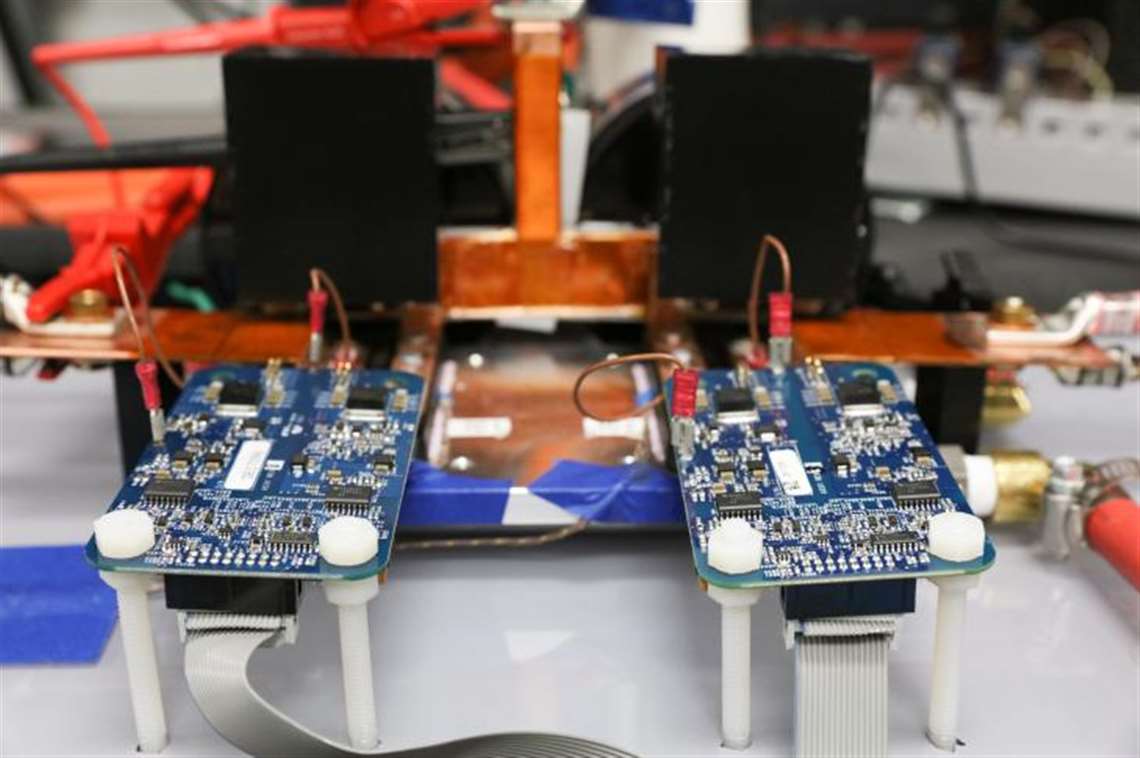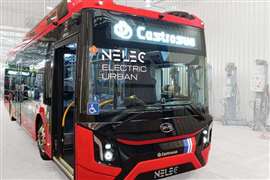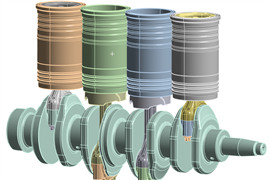Oak Ridge Demos Wireless EV Charging System
16 November 2018

Researchers at the Department of Energy’s Oak Ridge National Laboratory (ORNL) said they have demonstrated a 120 kW wireless charging system for vehicles. ORNL said the new system provides six times the power of previous ORNL technology and is seen as a major step toward charging times that rival the speed and convenience of a gas station fill-up.
ORNL said the wireless system transfers 120 kW of power with 97 percent efficiency. In a laboratory demonstration, power was transferred across a six-inch air gap between two magnetic coils and charged a battery pack. ORNL researchers created and demonstrated a 20 kW wireless charging system, which is being modified for applications such as commercial delivery trucks.
Like NPP on Facebook
“It was important to maintain the same or smaller footprint as the previous demonstration to encourage commercial adoption,” said project lead Veda Galigekere of ORNL’s Power Electronics and Electric Machinery Group.
“We used finite element and circuit analyses to develop a novel co-optimization methodology, solving the issues of coil design while ensuring the system doesn’t heat up or pose any safety issues, and that any loss of power during the transfer is minimal,” he said.
To achieve the 120 kW, the ORNL team created a new coil design co-optimized with the latest silicon carbide power electronic devices for a lightweight, compact system. The system’s architecture takes energy from the grid and converts it to high-frequency alternating current, which generates a magnetic field that transfers power across a large air gap. Once the energy is transferred to the secondary coil, it is converted back to direct current and stored in a vehicle’s batteries.
The demonstration advances DOE’s extreme fast-charging goal to develop a system that delivers 350 to 400 kW and reduces the charging time for electric vehicles to 15 minutes or less.
“This breakthrough significantly advances the technology needed to encourage greater adoption of electric vehicles by increasing their range and the ease of recharging,” said Moe Khaleel, associate laboratory director for Energy and Environmental Sciences at ORNL.
ORNL said its researchers will explore innovations to increase power transfer levels to 200 and eventually 350 kW, while refining dynamic wireless charging technology. A dynamic system enables the automatic charging of electric vehicles using wireless charging pads installed under roadways. Higher power charging systems are needed to minimize the cost and complexity of dynamic charging. “The goal is dynamic charging at highway speeds,” Galigekere said.
The research was funded by DOE’s Vehicle Technologies Office (VTO) and performed at the National Transportation Research Center, a DOE user facility at ORNL. The VTO, part of DOE’s Office of Energy Efficiency and Renewable Energy, invests in early-stage research to enable private-sector development and commercialization of affordable, energy efficient transportation technologies that can strengthen energy security, support U.S. economic growth, and offer consumers and businesses additional transportation choices.
POWER SOURCING GUIDE
The trusted reference and buyer’s guide for 83 years
The original “desktop search engine,” guiding nearly 10,000 users in more than 90 countries it is the primary reference for specifications and details on all the components that go into engine systems.
Visit Now
STAY CONNECTED




Receive the information you need when you need it through our world-leading magazines, newsletters and daily briefings.
CONNECT WITH THE TEAM












